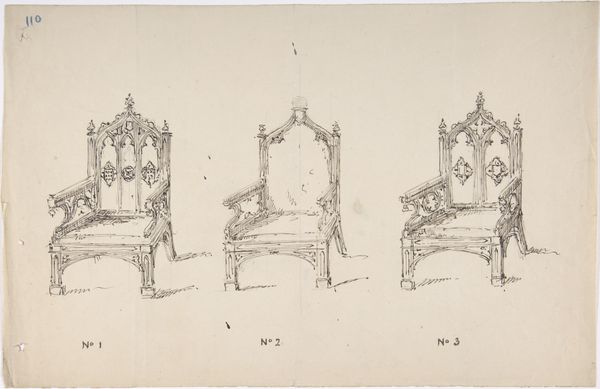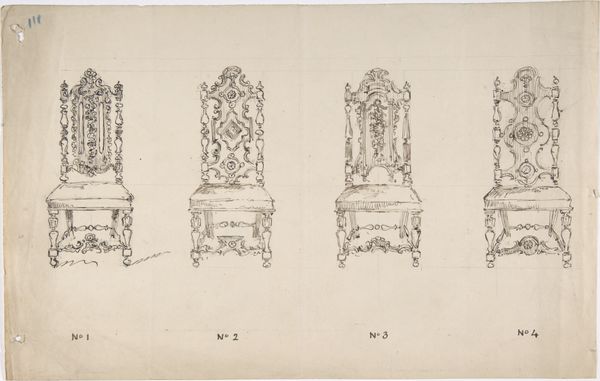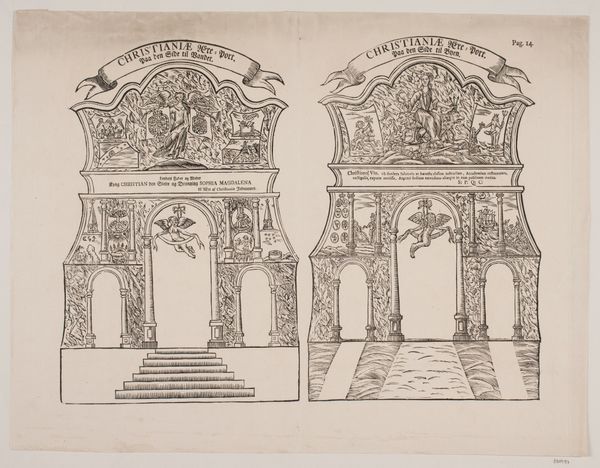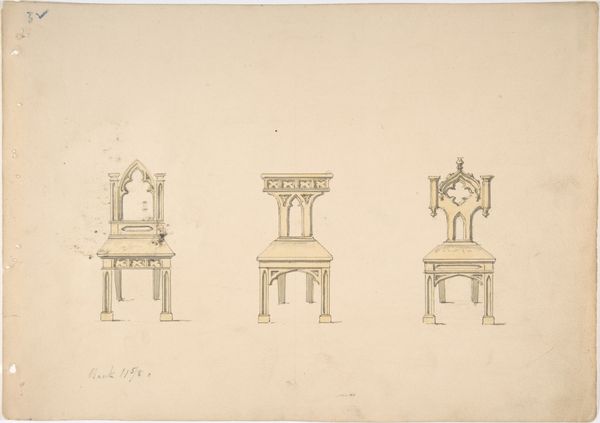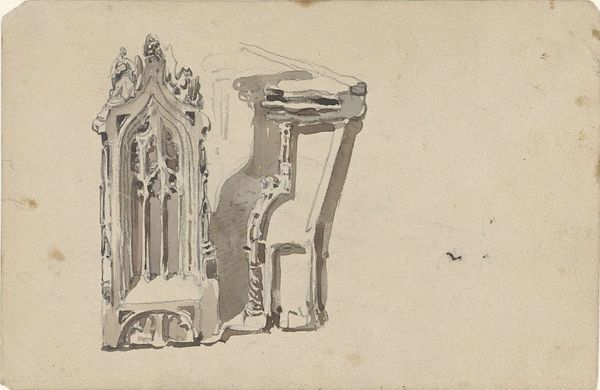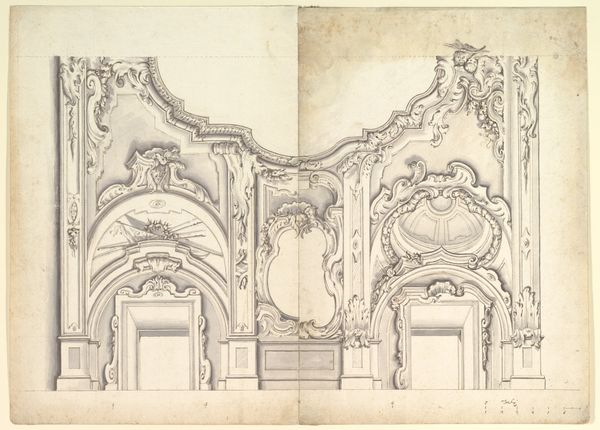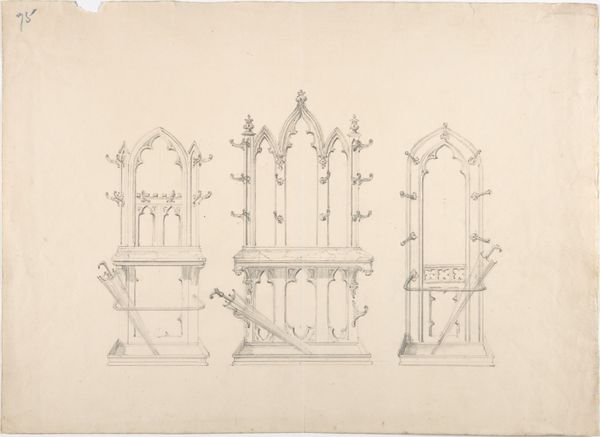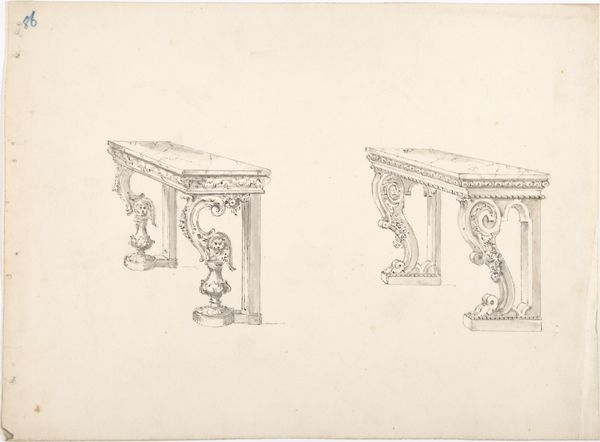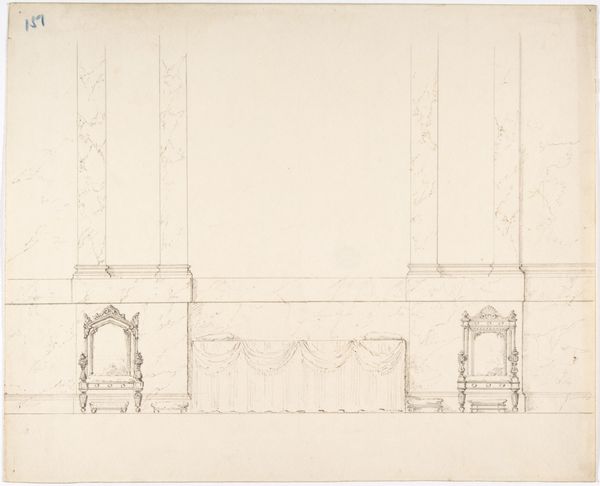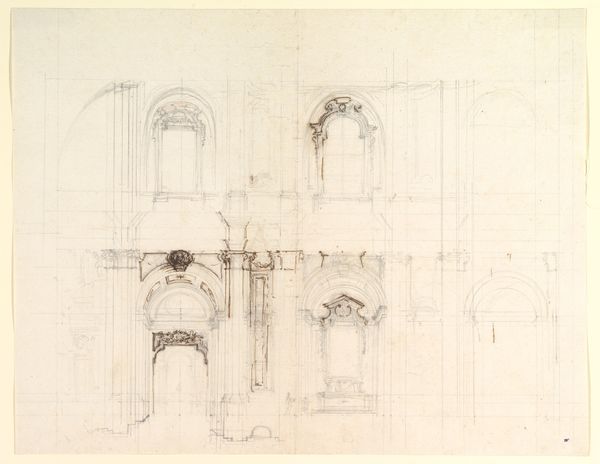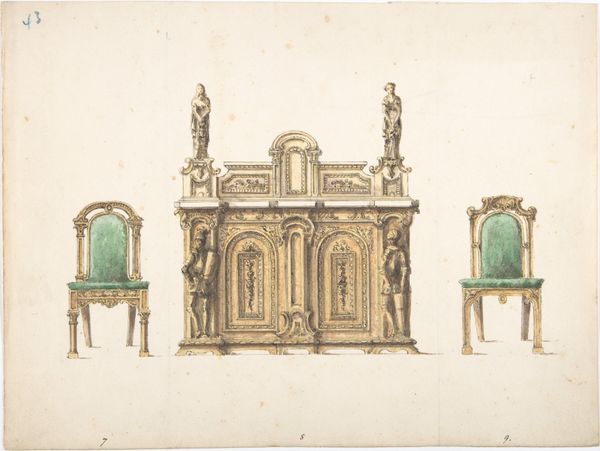
Design for Three Low Gothic or Renaissance Style Arm Chairs 1800 - 1850
0:00
0:00
drawing, ink, pen
#
drawing
#
medieval
#
furniture
#
etching
#
form
#
ink
#
line
#
pen work
#
pen
Dimensions: sheet: 8 3/16 x 12 15/16 in. (20.8 x 32.9 cm)
Copyright: Public Domain
Curator: What strikes me immediately about this pen and ink drawing is its stark elegance; there’s an austerity that, despite the decorative detail, makes it feel surprisingly modern. Editor: Indeed. The design comes to us anonymously from somewhere between 1800 and 1850 and is titled "Design for Three Low Gothic or Renaissance Style Arm Chairs.” What do you make of that ambiguity? Curator: It's crucial. This piece is positioned at a fascinating intersection of styles. The explicit references to Gothic and Renaissance ideals signify a yearning for legitimization of power. These styles evoke grandeur, tradition, and established hierarchies. We need to examine what such design aspirations would communicate within the social matrix of that specific time. Editor: The recurring motifs of pointed arches, crosses, and elaborate tracery strongly indicate a leaning toward Gothic symbolism, and would definitely carry strong emotional and spiritual connotations for viewers then, as now. We instantly recognize these shapes from centuries of use, predominantly in the sacred spaces of cathedrals and churches, influencing how we consider this particular seating and who may sit there. Curator: Precisely. So, whose cultural and spiritual identity is centered? This also begs the question of accessibility, in its many facets: socio-economic status, of course, but even considering ability—or in this case, relative comfort, given these chairs are rather visually than physically inviting. Editor: True. It presents itself to us primarily as a study in lines: observe the artist's controlled use of hatching to suggest depth and shadow, with the intent to convey solidity, even weight. Even in just line work, they become quite sculptural in our minds. Curator: It does highlight how form is inseparable from ideology, even in functional art like furniture design. The piece really invites one to question how design either reinforces or resists particular power structures. Editor: And for me, each symbol here presents a continuity. This almost seems to speak to the past as much as it forecasts the future, carrying echoes of ancient power into contemporary aesthetics. Curator: Well, viewing this work really challenges us to unravel the cultural narratives embedded in even the most seemingly innocuous designs. Editor: I’m left contemplating how enduring the symbolic language of visual art is, as expressed through familiar yet ever-transforming cultural emblems.
Comments
No comments
Be the first to comment and join the conversation on the ultimate creative platform.
